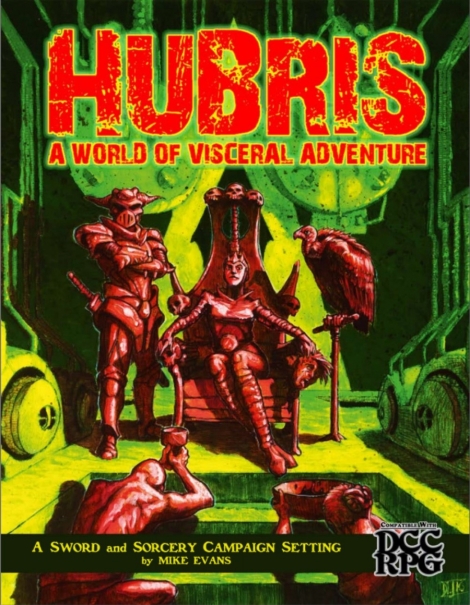 |
| Here she is! |
What's different? In a nutshell: it's much simpler. I reduced the ability count from seven to five, and that's with adding Luck as a new ability. Armor is handled simply by increasing the Hit Class, with some rare attacks halving or nullifying the armor contribution.
Also, magic is a lot simpler. Rather than describe a complex framework for custom spell casting methodologies, I reduced it to two: a semi-Vancian system, with slow-cast spells being stored up in a limited container for fast-casting (sorcery), and a fatigue-based system where casters develop mutations or restrictions as they advance (witchcraft).
I've added a few concepts, mostly stolen from Dungeon Crawl Classics (DCC). There's the aforementioned Luck, of course. In this case, all characters regain a Luck point per day. There's also a skill in Cantrips, which can basically be used to apply Luck to other characters (and also as a penalty), and to have it occur based on conditions. It yields double the bonus of a simple Luck expenditure, as well. This is an Explorer skill (my renaming of the Lamentations of the Flame Princess' (LotFP) Specialist) rather than a straight-up mage art, and it kind of simulates the mechanics of the DCC Halfling.
I also introduced my own system for feats which is based on Mighty Deeds. Basically, all characters are encouraged to supplement every attack with some special effect. The damage will always succeed if the attack hits (assuming the attacker wants to do damage). The feat will succeed if (1) the attack succeeds by an amount based on the difficulty of the feat, and (2) if the defender fails a saving throw. Warriors have an advantage, here, since they can take combat specializations that decrease the required margin of success to activate the feat.
The kind of mutations and restrictions that witches accrue, called "marks," are based partly on corruption from DCC, and similar ideas from Crypts and Things. The latter game influenced a number of these mechanics in subtle ways. They show themselves most clearly in how damage is handled.
Finally, note that this is a work in progress. Some of the tables are incomplete, and there's plenty of room for things to change.
Latest update: 2/10/2017
Without further ado...


